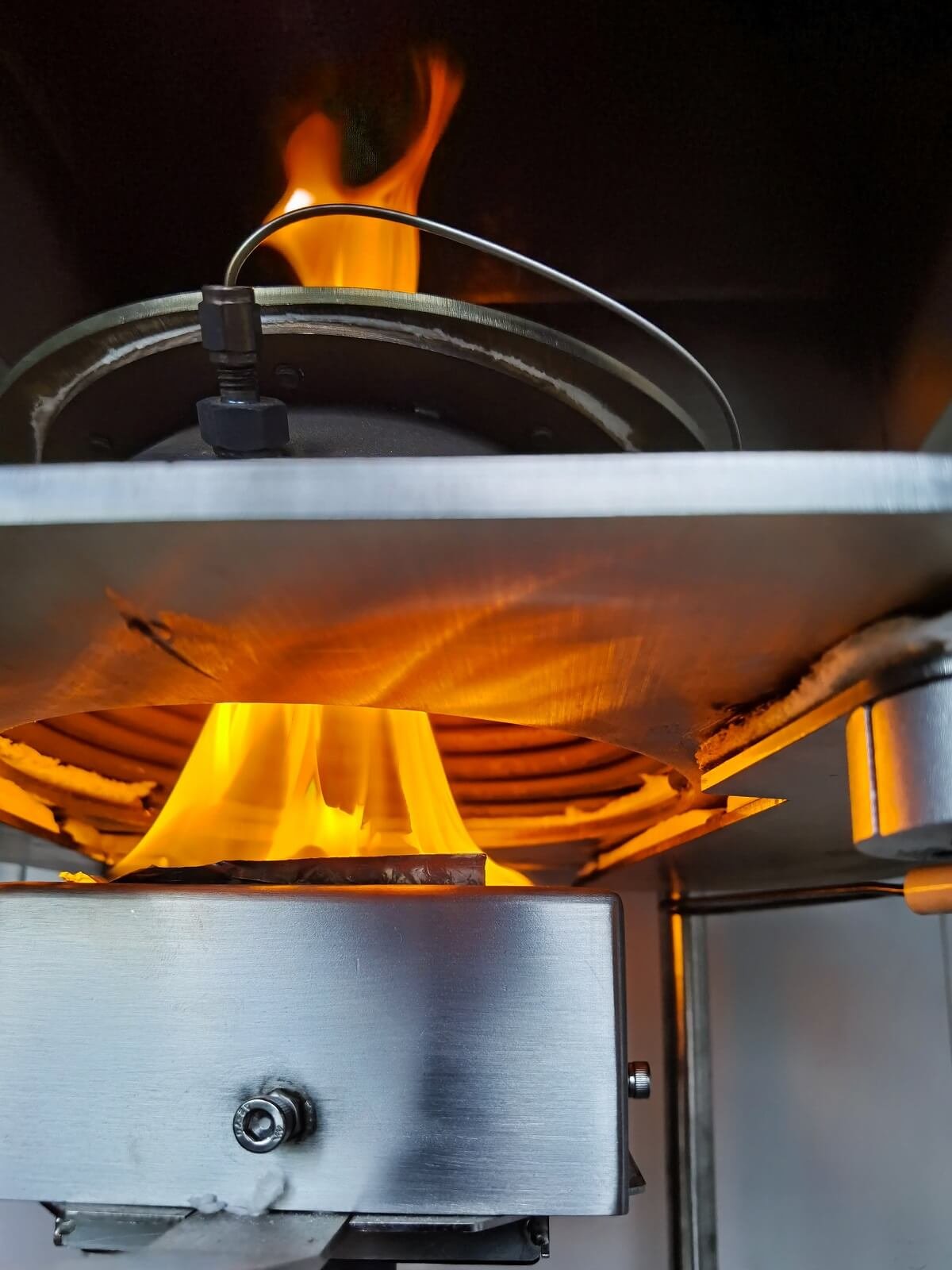What is the Cone Calorimeter Test?
The Invention of Cone Calorimeter
There are many test methods to evaluate the reaction to fire performance of materials, such as the Small Flame Source Test (ISO 11925-2), Oxygen Index (LOI) Test (ISO 4589-2, ASTM D2863), Horizontal and Vertical Flammability Test (UL 94), NBS Smoke Density Test (ISO 5659-2, ASTM E662). They are mostly small-scale test methods that test a particular property of a material, only assess the performance of a material under certain test conditions, and cannot be used as a basis for assessing the behavior of a material in a real fire.
Since its invention in 1982, the Cone Calorimeter has been recognized as a test instrument for the comprehensive assessment of the reaction to fire performance of materials.
It has the advantage of being comprehensive, simple, and accurate compared to traditional methods. It can measure not only the heat release rate but also the smoke density, mass loss, flammability behavior, and other parameters in a test.
In addition, the results obtained from the cone calorimeter test correlate well with large-scale combustion tests and are therefore widely used to evaluate the flammability performance of materials and assess fire development.
Standard Compliance
The Cone Calorimeter is one of the most important fire test instruments for studying the combustion properties of materials and has been used by many countries, regions, and international standards organizations in the fields of construction materials, polymers, composite materials, wood products, and cables.
ISO 5660-1
Reaction-to-fire tests — Heat release, smoke production and mass loss rate — Part 1: Heat release rate (cone calorimeter method) and smoke production rate (dynamic measurement).
ASTM E1354
Standard Test Method for Heat and Visible Smoke Release Rates for Materials and Products Using an Oxygen Consumption Calorimeter.
BS 476 Part 15
Fire tests on building materials and structures — Part 15: Method for measuring the rate of heat release of product.
ULC-S135-04
Standard Test Method for the Determination of Combustibility Parameters of Building Materials Using an Oxygen Consumption Calorimeter (Cone Calorimeter).
The Principle of Cone Calorimeter
Heat Release
The principle of heat release is based on the net heat of combustion is proportional to the amount of oxygen required for combustion, approximately 13.1MJ of heat is released per kilogram of oxygen consumed. Specimens in the test are burned under ambient air conditions while being subjected to an external irradiance within the range of 0 to 100 kW/m2 and measuring the oxygen concentrations and exhaust gas flow rates.
Smoke Release
The principle of smoke measurement is based on the intensity of light that is transmitted through a volume of combustion products is an exponentially decreasing function of distance. Smoke obscuration is measured as the fraction of laser light intensity that is transmitted through the smoke in the exhaust duct. This fraction is used to calculate the extinction coefficient according to Bouguer’s law. Specimens in the test are burned under ambient air conditions while being subjected to an external irradiance within the range of 0 to 100 kW/m2 and measuring smoke obscuration, and exhaust gas flow rate.
Mass Loss
The specimens in the test are burned above the weighing device while being subjected to an external irradiance within the range of 0 to 100 kW/m2 and measuring the mass loss rate.
Reports
Test data can be calculated for the heat release rate per exposed area or per kilogram material lost during the test, total heat release, smoke production rate per exposed area or per kilogram material lost during the test, total smoke production, mass loss rate, and total mass loss.
Time to sustained flaming and extinguished, TTI, in seconds
Heat release rate, HRR, in MJ/kg, kW/m2
Average heat release rate in first 180s and 300s, in kW/m2
Maximum average rate of heat emission, MARHE, in kW/m2.s
Total heat release, THR, in MJ
Mass loss, in g/m2.s
Smoke Produce Rate, SPR, m2/m2
Smoke production, TSP, in m2
Cone Calorimeter Apparatus
Cone-shaped radiant electrical heater, producing irradiance output of 100 kW per square meter.
Irradiance control device and heat flux meter.
Well heat insulation load cell.
Exhaust gas system with airflow measurement sensor.
Combustion gas sampling system with the filtering device.
Gas analyzer, including O2, CO, and CO2 concentration analyzer.
Smoke obscuration measuring system.
Self-calibration system.
Data acquisition system.
Operation software.
Application
Material Combustion Properties Evaluation
Evaluate the combustion hazards of material according to the test data of the cone calorimeter test (e.g. HRR, Peak HRR, TTI, SPR, etc.), and identify the suitable materials for use in different applications.
Flame Retardant Mechanism Study
By means of repeated tests and comparison of test data, the composition of materials can be optimized to obtain materials with better flame retardant properties.
Fire Model Study
By analyzing the heat release rate, smoke release rate from burning materials, trend analysis, or connecting to a medium-scale test model (ISO 9705), establish different kinds of fire models.
Summary
The Cone Calorimeter offers a method for assessing the heat release rate and dynamic smoke production rate of specimens exposed to specified controlled irradiance levels with an external igniter. It is a critical instrument in fire testing and research that are more repeatable, more reproducible, and easier to conduct.



